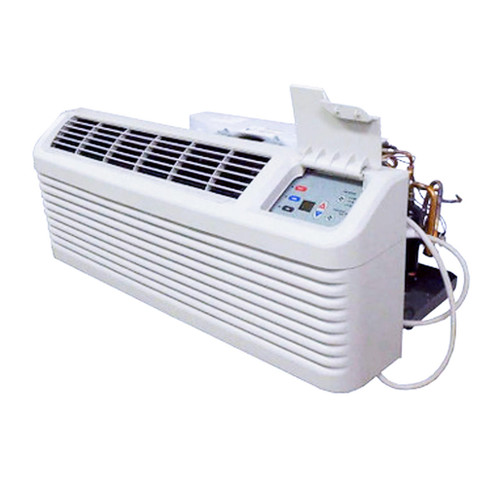Choosing Between PTAC vs Mini Split HVAC Systems
Posted by NorthStock, Inc on Jun 7th 2024
PTAC vs. Mini Splits: Which HVAC System is Right for You?
Not every building has central air. When you need a ductless HVAC solution, two of your best options are PTAC (Packaged Terminal Air Conditioner and Mini-Splits. Each has their own advantages and ideal circumstances for installation, so it's important to choose the right HVAC system for your needs. In this blog, we will explain each system and when it is the right HVAC choice for your space.
Understanding PTAC Systems

PTAC Definition and Components
PTAC stands for Packaged Terminal Air Conditioner. They are commonly found in hotel rooms and portable buildings. They are also ideal for any single space you want to heat and cool like garages, out-buildings, and renovated home offices.
PTAC system components include evaporator coils for cooling, electric heating, an air intake, a blower vent, and a condensation drain. They are typically placed half inside and half outside an exterior wall.
Advantages of PTAC Systems
- Cost-effectiveness: PTACs are compact and cost-effective. as only one unit, they are among the most affordable ways to cool a single space.
- Easy installation: PTACs require a very simple installation process, as they only need power and a mounting solution.
- Individual room control: PTACs give you complete control over the heating, cooling, and ventilation of each individual room where one is installed.
Limitations of PTAC Systems
- Limited efficiency: PTACs do not have the efficiency boost from a central unit, so are less powerful than centralized systems.
- Noisy operation: PTACs operate within the room where they are installed, so can be noisy.
- Aesthetics: PTACs can be seen as an unaesthetic addition to a room.
Exploring Mini Split Systems
Mini Split Definition and Components
Mini-Split HVACs, also known as Ductless Mini-Split systems involve two to eight (2-8) miniature HVAC units that share an outdoor compressor. Each mini-split unit is a compact panel that includes a blower vent, electric heating coils, and coolant tubes that cycle through hidden utility lines to and from the outdoor compressor.
Mini-splits were invented for small homes and buildings where there is no room for ductwork, and offer a balanced solution between PTACs and central air.
Advantages of Mini Splits
- Energy efficiency: Mini-splits are energy-efficient because they share energy usage with an outdoor compressor unit rather than doing the cooling individually in each room.
- Quiet operation: The noise of mini-splits occurs with the outdoor unit, so operation is quiet in each room where mini-splits are installed.
- Flexibility in installation: Mini-splits are extremely flexible in how and where they are installed.
- Individual Room Control: Like PTACs, mini-splits allow for individual room/zone control in heating and cooling.
Limitations of Mini Splits
- Higher upfront costs: Mini-split systems have a high upfront cost, but provide savings over time.
- Professional installation required: Mini-splits are sophisticated systems with utility coolant lines behind the wall, so require professional installation.
- Aesthetic considerations: Mini-splits are smaller than PTACs, but do have similar aesthetics as any wall-mounted unit.
Factors to Consider When Choosing Between PTAC and Mini Splits
When should you choose PTACs or Mini-Splits to heat and cool your space? Each is the ideal solution for different buildings and temperature control needs. Let's look into the important factors to consider as you make this decision.
- Room size and layout: Smaller rooms and interior rooms are more adaptive to mini-splits, while exterior rooms and singular spaces are more suited to PTACs.
- Budget considerations: A single PTAC costs less than a mini-split system, but a mini-split may be more efficient for heating and cooling an entire house or office floor.
- Energy efficiency requirements: Mini-splits are more energy-efficient, while PTACs only focus on heating or cooling a single space.
- Noise tolerance: PTACs are noisy, while Mini-splits are quiet inside each room, sharing a noisy outdoor unit instead.
- Aesthetic preferences: Mini-split units are smaller and more aesthetic, while PTAC units are more suited to semi-outdoor spaces like garages and outbuildings.
- Long-term maintenance and operational costs: Mini-splits require more maintenance, while PTACs use more electricity to operate.
Fulfill or PTAC or Mini Split Needs With Northstock
If you are looking for a wall-mounted and zone-controlled HVAC solution, Northstock has durable and efficient PTAC systems for your needs.
Contact us today. We would love to help make your next project a success!